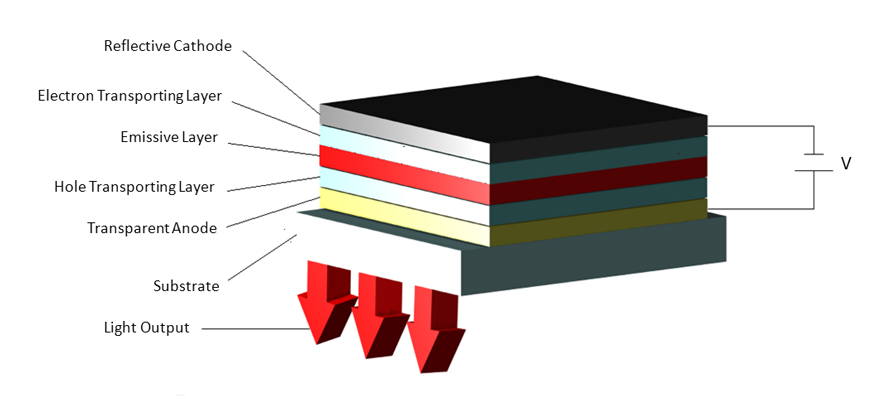The basic structure of an OLED device is shown below. Organic thin films typically less than 50 nm in thickness are formed between a negative electrode (cathode) and a positive electrode (anode). Applying a voltage across the device promotes current flow with the injection of positive and negative charges into the organic layers. Recombination of the charges in the emissive layer releases energy in the form of light. The low voltage requirement (3 – 7 volts) for this process provides a low power energy efficient device.

R-Display and Lighting will use proprietary emissive and charge transporting materials with select commercially available materials to fabricate advanced OLED devices. These materials can be used to make two types of OLED devices; RGB display devices with patterned emissive materials or White OLED devices (stacked RGB materials) that can be color tuned for display or lighting applications. Displays with the White OLED stack are combined with patterned color filters.
